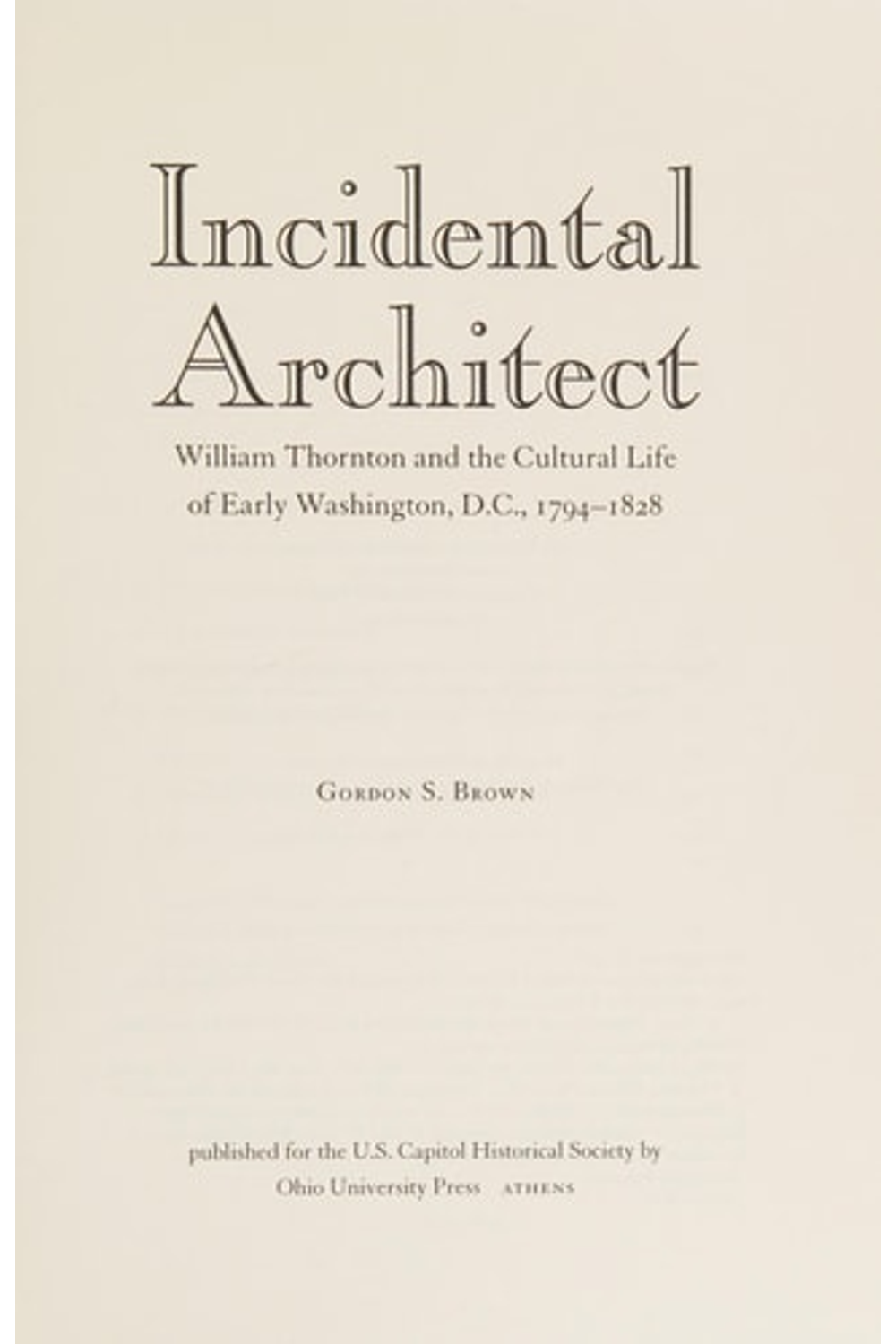Discover the captivating story of William Thornton, the original architect of the U.S. Capitol, and his profound impact on the cultural landscape of early Washington, D.C., in Gordon S. Brown’s “Incidental Architect.” This revealing biography delves beyond Thornton’s architectural achievements to explore his crucial role, alongside his wife Anna Maria, in shaping the intellectual and social life of the burgeoning capital city between 1794 and 1828. Brown meticulously reconstructs a vibrant era, showcasing how the Thorntons, imbued with the values of the Scottish Enlightenment, fostered a thriving environment for arts, science, and intellectual discourse. From his pivotal role in designing the Capitol to his ventures in steam navigation and directorship of the Patent Office, Thornton’s multifaceted career reflects the ambitious spirit of the young nation. “Incidental Architect” unveils the gradual development of Washington’s cultural institutions libraries, theaters, and intellectual societies and how they were nurtured by individuals like the Thorntons. This book offers a fresh perspective on the capital’s formative years, revealing how a city initially conceived as a political center evolved into a hub of intellectual and artistic activity. Ideal for readers interested in early American history, architectural biography, and the cultural foundations of Washington, D.C. This paperback edition, published by Ohio University Press, brings a vital piece of American history to life.
Incidental Architect: William Thornton and the Cultural Life of Early Washington, D.C., 17941828 (Perspective On Art & Architect)
19,75 $
In stock
While the majority of scholarship on early Washington focuses on its political and physical development, in Incidental ArchitectGordon S. Brown describes the intellectual and social scene of the 1790s and early 1800s through the lives of a prominent couple whose cultural aspirations served as both model and mirror for the citys own.
When William and Anna Maria Thornton arrived in Washington, D.C., in 1794, the new nations capital was little more than a raw village. The Edinburgheducated Thornton and his accomplished wife brought with them the values of the Scottish Enlightenment, an enthusiasm for the arts, and a polished urbanity that was lacking in the little city emerging from the swamps along the Potomac. Thorntons talents were manifold: He is perhaps best known as the original architect of the Capitol building, but he also served as a city commissioner and as director of the Patent Office, where his own experimentation in steam navigation embroiled him in a long-running dispute with inventor Robert Fulton.
In spite of their general preoccupation with politics and real estate development, Washingtons citizens gradually created a network of cultural institutionstheaters, libraries and booksellers, music venues, churches, schools, and even colleges and intellectual associationsthat began to satisfy their aspirations.
Incidental Architect is a fascinating account of how the citys cultural and social institutions were shaped by its earliest citizens.
| Authors | |
|---|---|
| Binding | |
| Condition | |
| ISBN-10 | 0821418637 |
| ISBN-13 | 9780821418635 |
| Language | |
| Pages | 192 |
| Publisher | |
| Year published | |
| Weight | 363 |
| Edition | 1 |
| Dewey decimal | 720.92 |
- Additional information
- Currencies
- USD – United States dollar
- EUR – Euro
- GBP – Pound sterling
- CNY – Chinese yuan
- BRL – Brazilian real
- MXN – Mexican peso
- JPY – Japanese yen
- PHP – Philippine peso
- THB – Thai baht
- PLN – Polish złoty
- CAD – Canadian dollar
- MYR – Malaysian ringgit
- AUD – Australian dollar
- TWD – New Taiwan dollar
- CZK – Czech koruna
- SEK – Swedish krona
- HUF – Hungarian forint
- ILS – Israeli new shekel
- CHF – Swiss franc
- HKD – Hong Kong dollar
- DKK – Danish krone
- SGD – Singapore dollar
- NOK – Norwegian krone
- NZD – New Zealand dollar

